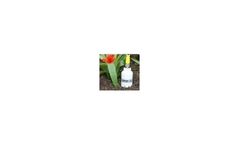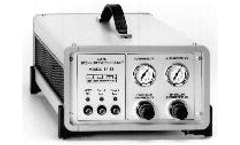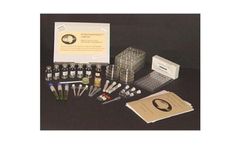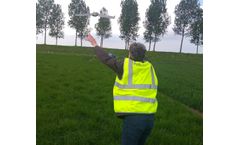- Home
- Applications
- netherlands
- monitoring sensors for agriculture
Show results for
Refine by
Monitoring Sensors For Agriculture Product Applications In Netherlands
8 applications found
Premium
Introduction The method is used for the determination of the mass fraction of free methionine, threonine, and tryptophan in fodder ...
ByLumex Instruments based in Mission, BRITISH COLUMBIA (CANADA)
Premium
Accuracy and ease of use make SM300 Soil Moisture Sensors well suited to irrigation applications. Readings can be used to optimise irrigation scheduling, or the SM300 can be installed as part of an automatic irrigation system. The sensor's compact size allows it to be installed in plant pots or grow ...
ByDelta-T Devices Ltd. based in Burwell, UNITED KINGDOM
ByNEO Monitors - a Nederman company based in Skedsmokorset, NORWAY
Application: Measurements of a single gas in variable locations. Example: the detection of CH4 hotspots in ...
ByBoreal Laser Inc. based in Edmonton, ALBERTA (CANADA)
Emission Measurement – An estimate of the total fugitive emissions from a site can be determined using environmental data, EPA gas dispersion models, and GasFinder2 sensor ...
ByBoreal Laser Inc. based in Edmonton, ALBERTA (CANADA)
Application: measurements of single gas species through a fixed open air sample path. Example: HF leak detection in refinery HF Alkylation ...
ByBoreal Laser Inc. based in Edmonton, ALBERTA (CANADA)
Trimble agriculture solutions enhance the efficiency of farming, so you can quickly and easily improve your everyday planning, decision making and overall strategy for your operation. With precision agriculture products and related solutions for your farming operations, Trimble assists you throughout every step of your process. Leverage our proven technologies to operate efficiently, save on input costs, and improve crop performance and productivity in order to make the best decisions for your farming ...
ByTrimble based in Westminster, COLORADO (USA)
A flexible and innovative method to monitor crop health. Crops absorb parts of the total incoming solar radiation as a source of energy to produce biomass (photosynthesis). The amount of near-infrared radiation that is reflected by plants is a good indicator of the condition and healthiness of the crop. A healthy crop reflects most of the near-infrared radiation, whereas a crop under stressed conditions adsorbs this type of radiation. This information can be used for early warning detection of crop stress or ...
ByHiView B.V. based in Wageningen, NETHERLANDS





